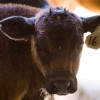 Cull vegetables can be an economical source of nutrients in beef cattle diets. They may be offered to beef cattle producers at a decreased cost or no cost. This 3-page fact sheet discusses the nutrient content and characteristics that need to be understood when utilizing cull vegetables. Written by Courtney Davis, Lindsey Wiggins, and Matt Hersom, and published by the UF Department of Animal Sciences, August 2012.
Cull vegetables can be an economical source of nutrients in beef cattle diets. They may be offered to beef cattle producers at a decreased cost or no cost. This 3-page fact sheet discusses the nutrient content and characteristics that need to be understood when utilizing cull vegetables. Written by Courtney Davis, Lindsey Wiggins, and Matt Hersom, and published by the UF Department of Animal Sciences, August 2012.
http://edis.ifas.ufl.edu/an280
Author: dihagan
Television and Babies' Sleep (FAR0426/FM395)
 “There are a number of video and television programs that have been made for children under the age of three. At times it may be fun to watch your baby or toddler bounce or dance along with the characters on the screen. Many busy caregivers also use these shows to give themselves a little time for a needed break or to prepare a meal or tidy up. However, watching television may not be best for your baby or toddler’s sleep.” This 2-page Family Album Radio transcript was written by Kristen McDanel and Suzanna Smith, and published by the UF Department of Family Youth and Community Sciences, August 2012.
“There are a number of video and television programs that have been made for children under the age of three. At times it may be fun to watch your baby or toddler bounce or dance along with the characters on the screen. Many busy caregivers also use these shows to give themselves a little time for a needed break or to prepare a meal or tidy up. However, watching television may not be best for your baby or toddler’s sleep.” This 2-page Family Album Radio transcript was written by Kristen McDanel and Suzanna Smith, and published by the UF Department of Family Youth and Community Sciences, August 2012.
http://edis.ifas.ufl.edu/fm395
Bud Rot of Palm (PP220/PP144)
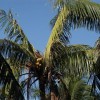 To understand bud rots, an explanation of palm anatomy is necessary. The growing point of the palm is often called the bud or heart. All leaves originate from there, and each palm stem has only one. Thus, when the bud is damaged or diseased, the palm usually dies. The first symptom is discoloration and wilting of the spear leaf and wilting/discoloration of the next youngest leaf. This 4-page fact sheet was written by Monica L. Elliott, and published by the UF Department of Plant Pathology, July 2012.
To understand bud rots, an explanation of palm anatomy is necessary. The growing point of the palm is often called the bud or heart. All leaves originate from there, and each palm stem has only one. Thus, when the bud is damaged or diseased, the palm usually dies. The first symptom is discoloration and wilting of the spear leaf and wilting/discoloration of the next youngest leaf. This 4-page fact sheet was written by Monica L. Elliott, and published by the UF Department of Plant Pathology, July 2012.
http://edis.ifas.ufl.edu/pp144
Baby Boomer Family Life (FAR5008/FM389)
 “The first of the baby boomers are getting a lot of press lately as they begin turning 60, and researchers have been exploring how this large generation impacts not only our political and cultural climate, but our families as well.” This 2-page Family Album Radio transcript was written by Suzanna Smith and published by the UF Department of Family Youth and Community Sciences, August 2012.
“The first of the baby boomers are getting a lot of press lately as they begin turning 60, and researchers have been exploring how this large generation impacts not only our political and cultural climate, but our families as well.” This 2-page Family Album Radio transcript was written by Suzanna Smith and published by the UF Department of Family Youth and Community Sciences, August 2012.
http://edis.ifas.ufl.edu/fm389
Common Monogenean Parasites of Fishes (FA28/FA033)
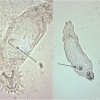 Monogeneans are a class of parasitic flatworms that are commonly found on fishes and lower aquatic invertebrates. Most monogeneans are browsers that move about freely on the fish’s body surface feeding on mucus and epithelial cells of the skin and gills; however, a few adult monogeneans will remain permanently attached to a single site on the host. Some monogenean species invade the rectal cavity, ureter, body cavity, and even the blood vascular system. Between 4,000 and 5,000 species of monogeneans have been described. They are found on fishes in fresh and salt water and in a wide range of water temperatures. This 10-page fact sheet was written by Peggy Reed, Ruth Francis-Floyd, and RuthEllen Klinger, and published by the UF Department of Fisheries and Aquatic Sciences, June 2012.
Monogeneans are a class of parasitic flatworms that are commonly found on fishes and lower aquatic invertebrates. Most monogeneans are browsers that move about freely on the fish’s body surface feeding on mucus and epithelial cells of the skin and gills; however, a few adult monogeneans will remain permanently attached to a single site on the host. Some monogenean species invade the rectal cavity, ureter, body cavity, and even the blood vascular system. Between 4,000 and 5,000 species of monogeneans have been described. They are found on fishes in fresh and salt water and in a wide range of water temperatures. This 10-page fact sheet was written by Peggy Reed, Ruth Francis-Floyd, and RuthEllen Klinger, and published by the UF Department of Fisheries and Aquatic Sciences, June 2012.
http://edis.ifas.ufl.edu/fa033
'Strawberry Star': A Spotted, Fancy-Leaved Caladium for Use in Containers and Landscapes (ENH1201/EP462)
 'Strawberry Star' is a fancy-leaved variety with a primarily white leaf face and attractive red spots. It is similar to 'Marie Moir' in leaf color and coloration pattern but different from 'Marie Moir' in petiole color. Compared to 'Marie Moir', 'Strawberry Star' sprouts earlier, produces high-quality container plants, demonstrates better landscape performance, and yields more tubers. These improvements make 'Strawberry Star' a desirable replacement for 'Marie Moir' and an additional sun-tolerant variety for the landscape plant palette. This 5-page fact sheet was written by Zhanao Deng, and published by the UF Department of Environmental Horticulture, August 2012.
'Strawberry Star' is a fancy-leaved variety with a primarily white leaf face and attractive red spots. It is similar to 'Marie Moir' in leaf color and coloration pattern but different from 'Marie Moir' in petiole color. Compared to 'Marie Moir', 'Strawberry Star' sprouts earlier, produces high-quality container plants, demonstrates better landscape performance, and yields more tubers. These improvements make 'Strawberry Star' a desirable replacement for 'Marie Moir' and an additional sun-tolerant variety for the landscape plant palette. This 5-page fact sheet was written by Zhanao Deng, and published by the UF Department of Environmental Horticulture, August 2012.
http://edis.ifas.ufl.edu/ep462
Are You Ready to Tie the Knot? A Quick Checklist (FCS2318/FY1334)
 The inventor, statesman, and scholar Benjamin Franklin provided some wise advice to all those thinking about tying the knot. “Keep your eyes wide open before marriage,” he said, “[and] half shut afterwards.” Marriage is a partnership that has emotional, financial, and legal implications. Before entering into this union, it is important for you and your partner to have your “eyes wide open” as you examine your individual attitudes and behaviors about both social and financial issues. This 4-page fact sheet was written by Lisa M. Leslie and Victor W. Harris, and published by the UF Department of Family Youth and Community Sciences, August 2012.
The inventor, statesman, and scholar Benjamin Franklin provided some wise advice to all those thinking about tying the knot. “Keep your eyes wide open before marriage,” he said, “[and] half shut afterwards.” Marriage is a partnership that has emotional, financial, and legal implications. Before entering into this union, it is important for you and your partner to have your “eyes wide open” as you examine your individual attitudes and behaviors about both social and financial issues. This 4-page fact sheet was written by Lisa M. Leslie and Victor W. Harris, and published by the UF Department of Family Youth and Community Sciences, August 2012.
http://edis.ifas.ufl.edu/fy1334
Protected Culture for Vegetable and Small Fruit Crops: The Soilless Trench System (HS1204)
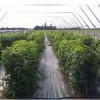 Vegetable and small fruit crop production under protective structures, such as greenhouses, high tunnels, and shade houses, often requires using soilless media to mitigate the impact of soilborne diseases, nematodes, and weeds, and it helps with management of fertilization and irrigation. Regardless of the nature and property of the media, they need to be held in containers to avoid direct contact with the soil or to elevate plants above the ground. An alternative to purchasing containers is building a soilless trench system for production of certain vegetables and small fruit crops. This 3-page fact sheet was written by Bielinski M. Santos and Teresa P. Salame-Donoso, and published by the UF Department of Horticultural Sciences, August 2012.
Vegetable and small fruit crop production under protective structures, such as greenhouses, high tunnels, and shade houses, often requires using soilless media to mitigate the impact of soilborne diseases, nematodes, and weeds, and it helps with management of fertilization and irrigation. Regardless of the nature and property of the media, they need to be held in containers to avoid direct contact with the soil or to elevate plants above the ground. An alternative to purchasing containers is building a soilless trench system for production of certain vegetables and small fruit crops. This 3-page fact sheet was written by Bielinski M. Santos and Teresa P. Salame-Donoso, and published by the UF Department of Horticultural Sciences, August 2012.
http://edis.ifas.ufl.edu/hs1204
Solutions for Managing Wastewater in Florida Tomato Packinghouses (SL372/SS573)
 A large amount of wastewater is produced in Florida's packinghouses during the cleaning and sanitizing of tomatoes. High transportation costs for off-site disposal and strict surface water discharge regulations are critical issues associated with the management of this wastewater. This 4-page fact sheet provides solutions for increasing the reuse of wastewater in tomato packinghouses in Florida. Written by Gurpal Toor, Maninder Chahal, and Bielinski Santos, and published by the UF Department of Soil and Water Science, August 2012.
A large amount of wastewater is produced in Florida's packinghouses during the cleaning and sanitizing of tomatoes. High transportation costs for off-site disposal and strict surface water discharge regulations are critical issues associated with the management of this wastewater. This 4-page fact sheet provides solutions for increasing the reuse of wastewater in tomato packinghouses in Florida. Written by Gurpal Toor, Maninder Chahal, and Bielinski Santos, and published by the UF Department of Soil and Water Science, August 2012.
http://edis.ifas.ufl.edu/ss573
'Summer Pink': A New Pink, Fancy-Leaved Caladium Variety (ENH1200/EP461)
 ‘Summer Pink’ is a new fancy-leaved caladium variety developed by the University of Florida’s Institute of Food and Agricultural Sciences (UF/IFAS) caladium breeding program for use in large containers and shady locations in the landscape (Deng and Harbaugh 2012). Leaves of this variety have a pink face and pink veins. In replicated field and greenhouse trials, ‘Summer Pink’ performed comparably or better than ‘Fannie Munson’ and ‘White Queen’, two pink caladium varieties commonly used in containers and landscapes. This 4-page fact sheet was written by Zhanao Deng, and published by the UF Department of Environmental Horticulture, August 2012.
‘Summer Pink’ is a new fancy-leaved caladium variety developed by the University of Florida’s Institute of Food and Agricultural Sciences (UF/IFAS) caladium breeding program for use in large containers and shady locations in the landscape (Deng and Harbaugh 2012). Leaves of this variety have a pink face and pink veins. In replicated field and greenhouse trials, ‘Summer Pink’ performed comparably or better than ‘Fannie Munson’ and ‘White Queen’, two pink caladium varieties commonly used in containers and landscapes. This 4-page fact sheet was written by Zhanao Deng, and published by the UF Department of Environmental Horticulture, August 2012.
http://edis.ifas.ufl.edu/ep461
Should We Go Organic? (FAR8048/FM357)
 “Choosing what to feed my family is no easy task. In addition to seeking meals that can be ready for our harried schedules and differing tastes, today when I go to the grocery store I also have to make decisions about whether or not to buy organically grown or raised foods. Many consumers worry that pesticides used in conventionally grown produce may increase our risk of cancer. But is this concern based in reality?” This 2-page fact sheet was written by Kate Welch, Linda Bobroff, and Amy Simonne, and published by the UF Department of Family Youth and Community Sciences, August 2012.
“Choosing what to feed my family is no easy task. In addition to seeking meals that can be ready for our harried schedules and differing tastes, today when I go to the grocery store I also have to make decisions about whether or not to buy organically grown or raised foods. Many consumers worry that pesticides used in conventionally grown produce may increase our risk of cancer. But is this concern based in reality?” This 2-page fact sheet was written by Kate Welch, Linda Bobroff, and Amy Simonne, and published by the UF Department of Family Youth and Community Sciences, August 2012.
http://edis.ifas.ufl.edu/fm357
Teen Relationship Abuse Research Study (FAR1205/FM400)
 “When we think of violence between intimate partners, we often think of domestic abuse between adult men and women, and most often between husbands and wives. However, in a recent study commissioned by Liz Claiborne Inc., researchers discovered deep and troubling evidence that today’s teens are not only experiencing dating violence, but are accepting it as normal.” This 2-page Family Album Radio transcript was written by Donna Davis, and published by the UF Department of Family Youth and Community Sciences, August 2012.
“When we think of violence between intimate partners, we often think of domestic abuse between adult men and women, and most often between husbands and wives. However, in a recent study commissioned by Liz Claiborne Inc., researchers discovered deep and troubling evidence that today’s teens are not only experiencing dating violence, but are accepting it as normal.” This 2-page Family Album Radio transcript was written by Donna Davis, and published by the UF Department of Family Youth and Community Sciences, August 2012.
http://edis.ifas.ufl.edu/fm400
Integrated Disease Management for Vegetable Crops in Florida (PP193/PP111)
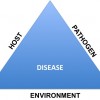 Integrated Pest Management (IPM) as applied to vegetable diseases means using all the tactics available to the grower (cultural, biological, host-plant resistance, field scouting, chemical) that provide acceptable yield and quality at the least cost and are compatible with the tenets of environmental stewardship. This 6-page fact sheet was written by Mathews Paret, Nick Dufault, Tim Momol, Jim Marois, and Steve Olson, and published by the UF Department of Plant Pathology, August 2012.
Integrated Pest Management (IPM) as applied to vegetable diseases means using all the tactics available to the grower (cultural, biological, host-plant resistance, field scouting, chemical) that provide acceptable yield and quality at the least cost and are compatible with the tenets of environmental stewardship. This 6-page fact sheet was written by Mathews Paret, Nick Dufault, Tim Momol, Jim Marois, and Steve Olson, and published by the UF Department of Plant Pathology, August 2012.
http://edis.ifas.ufl.edu/pp111
Adolescent Bullying and Family Therapy (FAR1204/FM399)
 “As much as parents like to think that bullying is something that’s outgrown in childhood, unfortunately it’s actually on the increase in adolescence. There are various individual and school-based approaches to dealing with bullying, but a new intervention that you might find surprising is none other than family therapy. ” This 2-page Family Album Radio transcript was written by Kate Fogarty, and published by the UF Department of Family Youth and Community Sciences, August 2012.
“As much as parents like to think that bullying is something that’s outgrown in childhood, unfortunately it’s actually on the increase in adolescence. There are various individual and school-based approaches to dealing with bullying, but a new intervention that you might find surprising is none other than family therapy. ” This 2-page Family Album Radio transcript was written by Kate Fogarty, and published by the UF Department of Family Youth and Community Sciences, August 2012.
http://edis.ifas.ufl.edu/fm399
Cyberbullying (FAR1713/FM398)
 “Bullying, or aggression on a continual basis between peers where one has a power advantage over another—is common among children and adolescents. Using intimidation and physical force or spreading rumors is often what comes to mind when we think of bullying. However, a form that parents and teachers may be less aware of is called “cyberbullying.” This involves put-downs, publicly sharing personal information, stalking, and other overt attacks upon a person, all using electronic communication.” This 2-page Family Album Radio transcript was written by Kate Fogarty and published by the UF Department of Family Youth and Community Sciences, August 2012.
“Bullying, or aggression on a continual basis between peers where one has a power advantage over another—is common among children and adolescents. Using intimidation and physical force or spreading rumors is often what comes to mind when we think of bullying. However, a form that parents and teachers may be less aware of is called “cyberbullying.” This involves put-downs, publicly sharing personal information, stalking, and other overt attacks upon a person, all using electronic communication.” This 2-page Family Album Radio transcript was written by Kate Fogarty and published by the UF Department of Family Youth and Community Sciences, August 2012.
http://edis.ifas.ufl.edu/fm398
Entomopathogenic Nematodes (Nematoda: Rhabditida: families Steinernematidae and Heterorhabditidae) (EENY530/IN944)
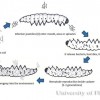 Entomopathogenic nematodes are soft bodied, non-segmented roundworms that are obligate or sometimes facultative parasites of insects. They occur naturally in soil environments and locate their host in response to carbon dioxide, vibration, and other chemical cues. They fit nicely into integrated pest management programs because they are nontoxic to humans, specific to their target pests, and can be applied with standard pesticide equipment. This 4-page fact sheet was written by Nastaran Tofangsazie, Steven P. Arthurs, and Robin M. Giblin-Davis, and published by the UF Department of Entomology and Nematology, August 2012.
Entomopathogenic nematodes are soft bodied, non-segmented roundworms that are obligate or sometimes facultative parasites of insects. They occur naturally in soil environments and locate their host in response to carbon dioxide, vibration, and other chemical cues. They fit nicely into integrated pest management programs because they are nontoxic to humans, specific to their target pests, and can be applied with standard pesticide equipment. This 4-page fact sheet was written by Nastaran Tofangsazie, Steven P. Arthurs, and Robin M. Giblin-Davis, and published by the UF Department of Entomology and Nematology, August 2012.
http://edis.ifas.ufl.edu/in944
Using Soils to Guide Fertilizer Recommendations for Southern Pines (CIR1230/FR053)
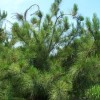 Soils supporting southern pine stands in the South tend to be infertile and nutrient additions are often required to achieve optimum rates of production. This 12-page publication describes and classifies soils of the southeastern Coastal Plain region and specifically addresses issues of fertility, growth-limiting nutrients, and fertilizer recommendations for southern pines. Written by Eric J. Jokela and Alan J. Long, and published by the UF Department of School of Forest Resources and Conservation, June 2012.
Soils supporting southern pine stands in the South tend to be infertile and nutrient additions are often required to achieve optimum rates of production. This 12-page publication describes and classifies soils of the southeastern Coastal Plain region and specifically addresses issues of fertility, growth-limiting nutrients, and fertilizer recommendations for southern pines. Written by Eric J. Jokela and Alan J. Long, and published by the UF Department of School of Forest Resources and Conservation, June 2012.
http://edis.ifas.ufl.edu/fr053
Economic Contributions of Agriculture, Natural Resources, and Related Industries in Florida for 2010 (FE906)
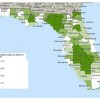 Agriculture, natural resources, and related industries remain a significant force in the economy of Florida, and it is important to recognize their economic contributions for informed public policy. The economic contributions of these industries were evaluated for 2010 to update previous reports and provide further information on economic trends in the wake of the historic global recession of 2007–2009. This 27-page report was written by Alan W. Hodges, Mohammad Rahmani, and Thomas J. Stevens, and published by the UF Department of Food and Resource Economics, August 2012.
Agriculture, natural resources, and related industries remain a significant force in the economy of Florida, and it is important to recognize their economic contributions for informed public policy. The economic contributions of these industries were evaluated for 2010 to update previous reports and provide further information on economic trends in the wake of the historic global recession of 2007–2009. This 27-page report was written by Alan W. Hodges, Mohammad Rahmani, and Thomas J. Stevens, and published by the UF Department of Food and Resource Economics, August 2012.
http://edis.ifas.ufl.edu/fe906
Potato Physiological Disorders – Internal Heat Necrosis (HS1145/HS395)
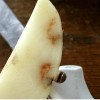 Internal heat necrosis is a physiological disorder that causes an unacceptable browning of the tuber tissue and can cause economic losses to the grower. The three leading suspected causes of IHN in tubers are high soil temperature, inadequate soil moisture, and suboptimal plant nutrition, or a combination of these factors. This 3-page fact sheet was written by Lincoln Zotarelli, Christine M. Worthington,Chad M. Hutchinson, Seth Byrd, Douglas Gergela, and Diane Rowland, and published by the UF Department of Horticultural Sciences, July 2012. http://edis.ifas.ufl.edu/hs395
Internal heat necrosis is a physiological disorder that causes an unacceptable browning of the tuber tissue and can cause economic losses to the grower. The three leading suspected causes of IHN in tubers are high soil temperature, inadequate soil moisture, and suboptimal plant nutrition, or a combination of these factors. This 3-page fact sheet was written by Lincoln Zotarelli, Christine M. Worthington,Chad M. Hutchinson, Seth Byrd, Douglas Gergela, and Diane Rowland, and published by the UF Department of Horticultural Sciences, July 2012. http://edis.ifas.ufl.edu/hs395
Preventing Foodborne Illness: Yersiniosis (FSHN1209/FS193)
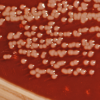 Yersiniosis is an infectious disease caused by the consumption of food contaminated with the bacterium Yersinia. It is characterized by gastroenteritis, with diarrhea and/or vomiting, fever, abdominal pains, and skin rashes. Although outbreaks of yersiniosis are uncommon and sporadic in nature, foodborne outbreaks have been associated with consumption of contaminated food or water, and in places of high pork consumption. This 3-page fact sheet was written by Aswathy Sreedharan, Correy Jones, and Keith Schneider, and published by the UF Department of Food Science and Human Nutrition, June 2012. http://edis.ifas.ufl.edu/fs193
Yersiniosis is an infectious disease caused by the consumption of food contaminated with the bacterium Yersinia. It is characterized by gastroenteritis, with diarrhea and/or vomiting, fever, abdominal pains, and skin rashes. Although outbreaks of yersiniosis are uncommon and sporadic in nature, foodborne outbreaks have been associated with consumption of contaminated food or water, and in places of high pork consumption. This 3-page fact sheet was written by Aswathy Sreedharan, Correy Jones, and Keith Schneider, and published by the UF Department of Food Science and Human Nutrition, June 2012. http://edis.ifas.ufl.edu/fs193